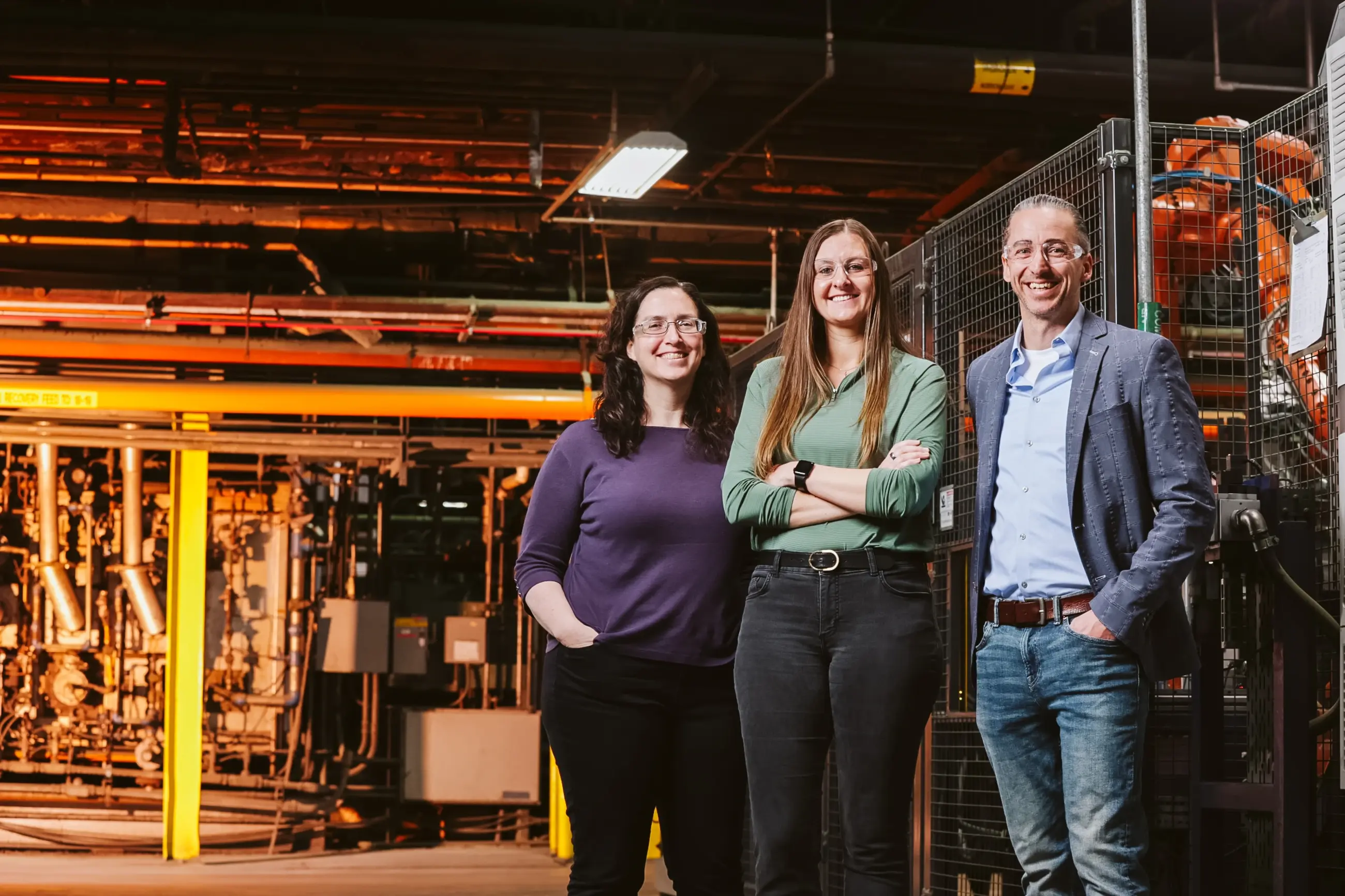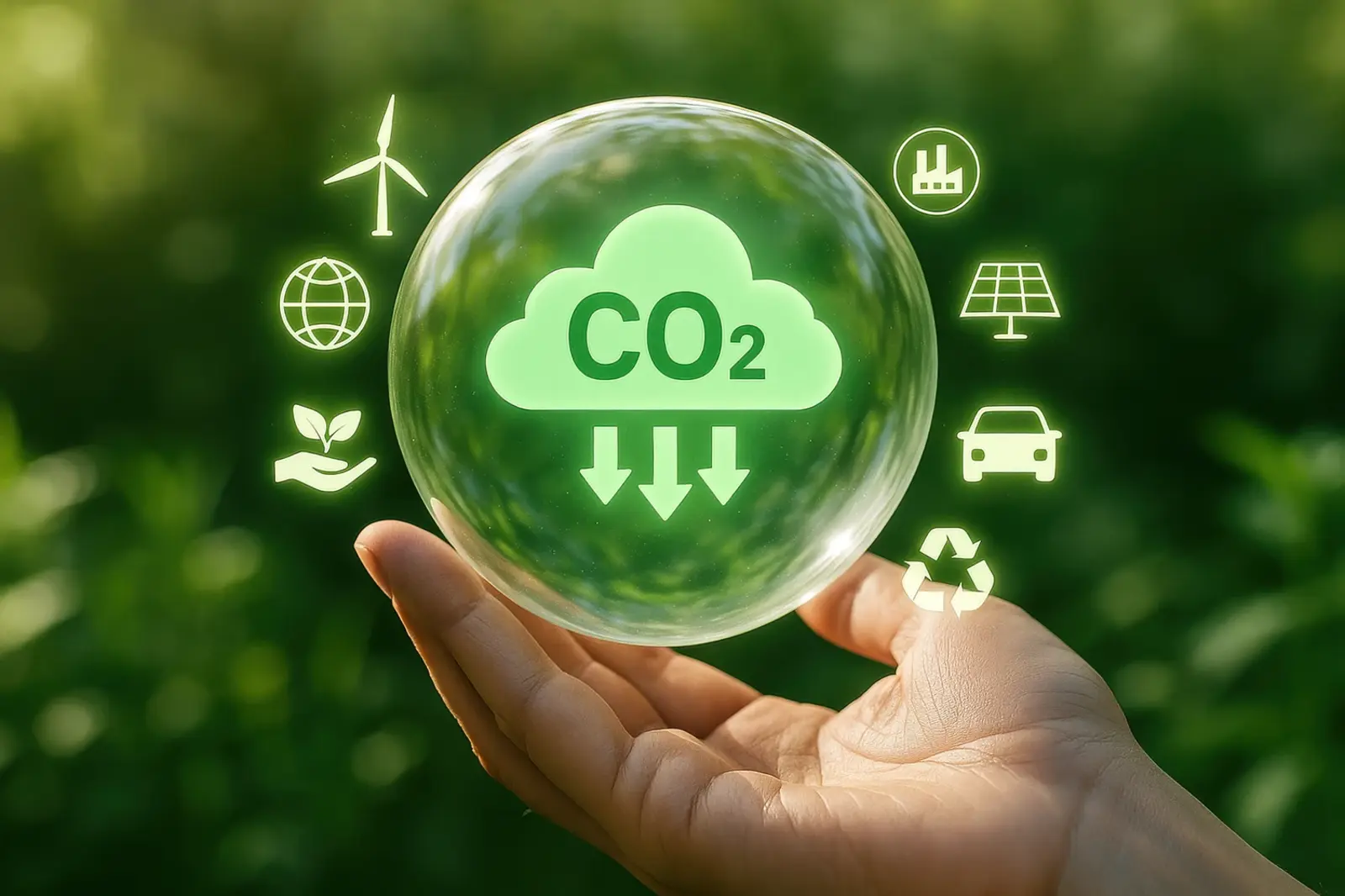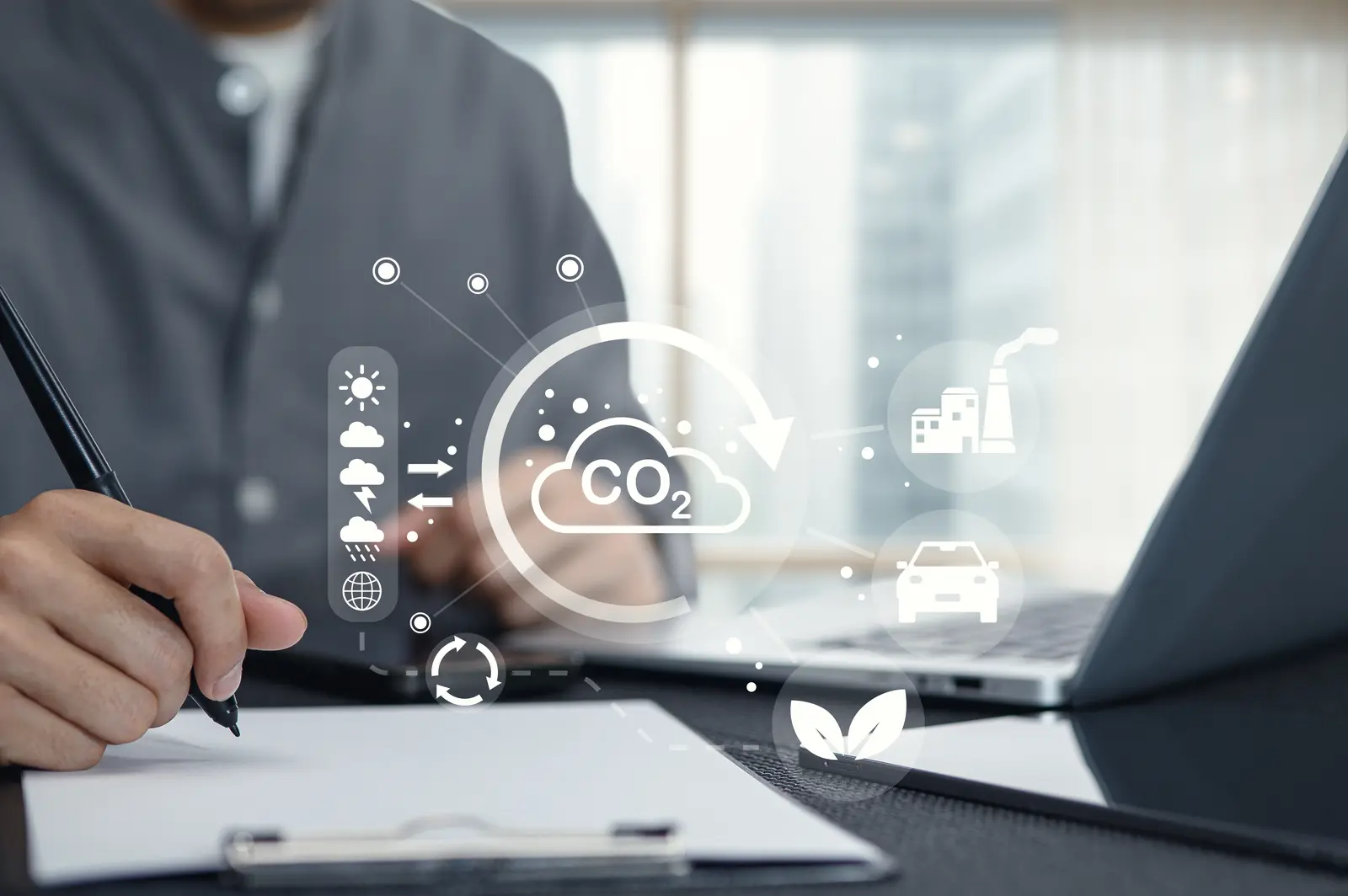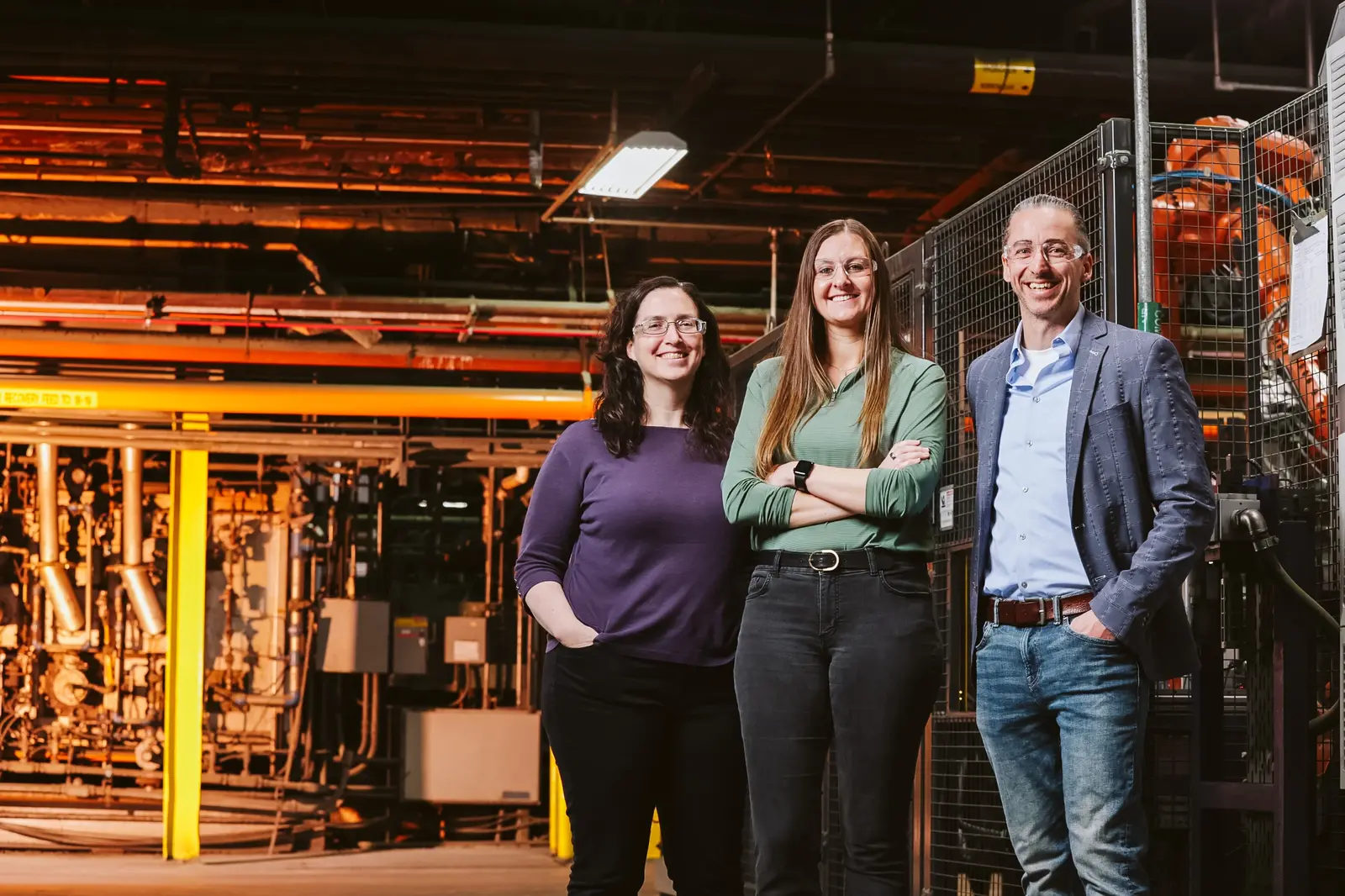
We are committed to improve our energy efficiency and decarbonize our processes by utilizing low-emission inputs and processing a high share of secondary materials in powder production.
Jeanne Reno, QHSE, Tori Bristol, Decarbonization and HSE, & Jonathan Schaefer, Managing Director GTP in Towanda
Production – Material and resource efficiency in production

We take action across several key dimensions:
- Decarbonize production technologies
- Shift to renewable energy sources, boost energy efficiency and recover heat
- Produce hydrogen through electrolysis powered by renewable electricity
- Optimize processes with automation and digital controls
- Maximize recycling of raw materials, waste and operating materials
Greenhouse Gas Reduction
The Plansee Group has established a comprehensive roadmap to reduce greenhouse gas emissions and has implemented a range of sustainability initiatives.
Based on data from all production sites, the Plansee Group’s Corporate Carbon Footprint is calculated in line with GHG protocol standards since the base year 2020/21.
In its calculation the Plansee Group categorizes its emissions as follows:
- Scope 1: Direct GHG Emissions from owned or controlled sources.
- Scope 2: Indirect GHG Emissions from the generation of purchased energy.
- Scope 3 upstream: Other indirect GHG emissions (not included in scope 2) that occur in the upstream value chain (e.g. production of raw material or products).
- Scope 3 downstream: Other indirect GHG emissions that occur in the downstream value chain (e.g. use and disposal of products).
Both Plansee HPM and CERATIZIT business areas have submitted science-based targets for validation, aiming to significantly reduce greenhouse gas emissions across their operations and value chains. The Science Based Targets initiative (SBTi) has officially approved CERATIZIT’s near- and long-term science-based emissions reduction targets in June 2025.
The most important factors impacting the Plansee Group's carbon footprint are the combustion of natural gas, hydrogen production, electricity consumption, the use of chemicals, the procurement of raw materials and employees' commutes to work. Measures are therefore being implemented in these areas.
Compensation Projects
The Plansee Group has decided to implement "beyond value chain mitigation" measures.
Unavoidable greenhouse gas emissions have been voluntarily compensated for through certified projects close to its sites in the USA and India since March 1, 2025.
The US and India projects are planned for the long-term and are being monitored by internationally recognized certification bodies (ACR and Verra) based on the highest standards available at present (ICVCM), in addition to conducting internal audits. In Europe, the Plansee Group is currently still in the selection phase for suitable compensation projects.
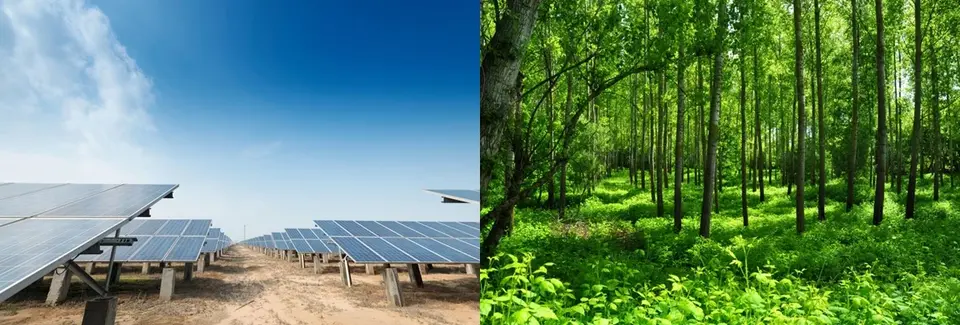
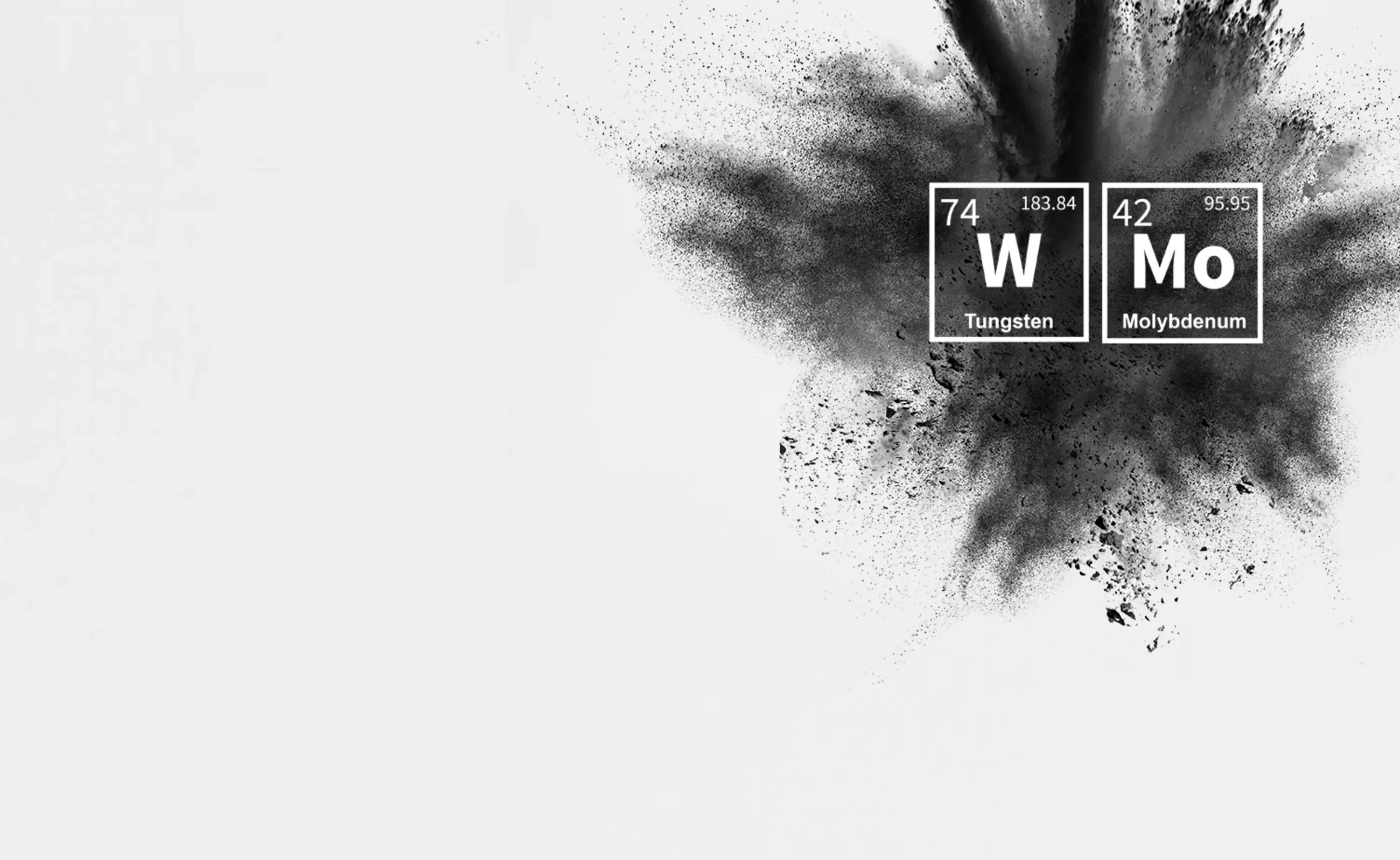
Driving circular economy
The Plansee Group is dedicated to optimizing the recovery and consumption of all its materials, particularly the refractory metals molybdenum and tungsten.
Our innovative processes allow us to repurpose end-of-life products and recycle by-products and scrap, thus minimizing waste, and maximizing resource efficiency.
The end-of-life treatment of molybdenum and tungsten depends on their chemical state: Metallic molybdenum and tungsten are valuable to industries that use them as alloying additions. Carbide-based tungsten composites and alloys are suitable for recycling processes that recover tungsten and other elements, such as cobalt.
Occupational Health and Safety
The Plansee Group prioritizes the health and safety of its employees, as outlined in its Code of Conduct and QHSE policies.
It is committed to occupational safety and aims to reduce the total number of reportable incidents (TRIR), the key performance indicator for occupational accidents, to zero through various preventive measures and the introduction of fixed procedures and a global reporting system for all HSE-related incidents.
Natural Resources
The Plansee Group is committed to innovating its processes to reduce emissions in the production of tungsten and molybdenum products and to protect natural resources.
This includes monitoring and reducing emissions into the air and water, responsible water use and protection of local water resources, maintaining biodiversity, waste prevention programs through the separation of different types of waste and the continuous review of recycling options.

